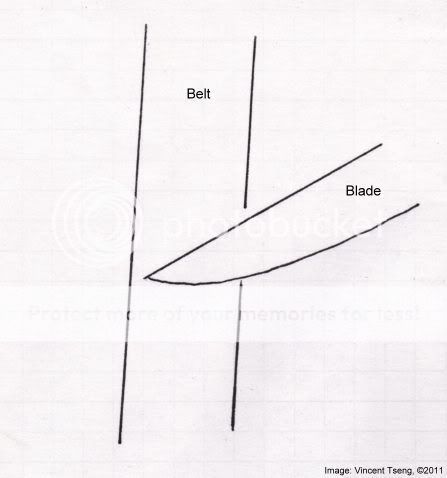AFAustin
Gold Member
- Joined
- Jun 8, 2004
- Messages
- 2,502
robino, looks like you've had some good success---congrats!
Noctis (or anyone who knows) let me please ask you about the belt cleaner. On my way home from work today, I stopped by the local HF and bought one of the rubber belt cleaners I mentioned above: http://www.harborfreight.com/sanding...ner-30766.html Heckuva deal---$6.99 online, but marked as $5.99 at the store, minus the 20% from a coupon that HF widely disseminates, came out to a little over $5 incl. tax, and with a free digital multimeter thrown in, thanks to yet another HF coupon.
So, here are my questions:
1) The first thing I noticed, after removing the plastic shrink wrap, was a statement on the label saying, No need to remove wrapper(!) I cant imagine that they mean you are supposed to use it with the shrink wrap still on. Any idea what that's about?
2) Secondly, the instructions say to hold the cleaner firmly against the moving belt. When I did that, though, it slowed the WS motor down to a crawl, and I dont want to burn it up! So, I guess that means "a little" firmly?
3) I let up on the firmness and ran a clogged belt over it and it did remove a good bit of gunk. Most of the gunk, of course, stayed on the rubber cleaner. So, how do you clean the cleaner? An old toothbrush and soap removed some, and a scouring sponge and Comet some more, but about half still remains.
Thanks for any advice.
Andrew
Noctis (or anyone who knows) let me please ask you about the belt cleaner. On my way home from work today, I stopped by the local HF and bought one of the rubber belt cleaners I mentioned above: http://www.harborfreight.com/sanding...ner-30766.html Heckuva deal---$6.99 online, but marked as $5.99 at the store, minus the 20% from a coupon that HF widely disseminates, came out to a little over $5 incl. tax, and with a free digital multimeter thrown in, thanks to yet another HF coupon.
So, here are my questions:
1) The first thing I noticed, after removing the plastic shrink wrap, was a statement on the label saying, No need to remove wrapper(!) I cant imagine that they mean you are supposed to use it with the shrink wrap still on. Any idea what that's about?
2) Secondly, the instructions say to hold the cleaner firmly against the moving belt. When I did that, though, it slowed the WS motor down to a crawl, and I dont want to burn it up! So, I guess that means "a little" firmly?
3) I let up on the firmness and ran a clogged belt over it and it did remove a good bit of gunk. Most of the gunk, of course, stayed on the rubber cleaner. So, how do you clean the cleaner? An old toothbrush and soap removed some, and a scouring sponge and Comet some more, but about half still remains.
Thanks for any advice.
Andrew





